《英汉问候语告别语对比研究》
| 作者 | 钱厚生著 编者 |
|---|---|
| 出版 | 北京:商务印书馆 |
| 参考页数 | 214 |
| 出版时间 | 1996(求助前请核对) 目录预览 |
| ISBN号 | 7100020573 — 求助条款 |
| PDF编号 | 88664778(仅供预览,未存储实际文件) |
| 求助格式 | 扫描PDF(若分多册发行,每次仅能受理1册) |

Contents1
Introduction1
Chapter 1 The Structure of Greetings and Partings5
1.1 Greetings and Partings as Conversational Components5
Figure 1 Summary Diagram of Clark’s Analysis of Conversational Structure7
Figures7
1.2 Greetings and Partings as Speech Units9
Figure 2 Modified Diagram of Greetings and Part-ings as Components of Conversational Structure10
1.3 Greetings and Partings as Adjacency Pairs16
Chapter 2 The Function of Greetings and Partings21
2.1 Greetings and Partings as Illocutionary Acts21
2.2 Greetings and Partings as Access Rituals24
2.3 Greetings and Partings as Linguistic Routines of Politeness26
Chapter 3 The Use of Greetings and Partings29
3.1 Greeting and Partins? Strategies:Brown and Levinson’s Mod?29
3.2 Social Factors in Greetings and Partings? Laver’s Framework34
Figure 3 Laver’s Diagram of the Factors That Con-strain the Choice of Formulaic Greeting and Parting Phrases in British English37
3.3 Other Factors in Greetings and Partings38
Chapter 4 Greetings and Partings in English and Chinese:A Contrastive Study of Their Repertoire42
4.1 Data Collection42
4.2 Varieties of English and Chinese Greetings45
and Partings45
Figure 4 Summary Diagram of the Classification of Greetings54
4.3 Difference in English and Chinese Greetings and Partings59
Figure 5 Summary Diagram of the Classification of Partings59
4.4 English and Chinese Terms of Address64
Table 1 English and Chinese Kinship Terms65
Tables65
5.1 Experimental Method69
Chapter 5 Greetings and Partings in English and Chinese:Experiments on Their Use69
5.2 Frequency of Use of English and Chinese Greetings and Partings72
Table 2 Frequency Scores of Specified English and Chinese Greeting Expressions73
Table 3 Frequency Scores of Specified English and Chinese Parting Expressions74
5.3 Degree of Politeness in English and Chinese Greetings and Partings75
Table 4 Politeness Scores of Specified English Greeting Expressions76
Table 5 Politeness Scores of Specified Chinese Greeting Expressions77
Table 7 Politeness Scores of Specified Chinese Parting Expressions78
Table 6 Politeness Scores of Specified English Parting Expressions78
Table 9 Politeness Scores of Specified Responses to Chinese Greeting79
Table 8 Politeness Scores of Specified Responses to English Greeting79
Table 10 Politeness Scores of Specified Responses to English Parting80
Table 11 Politeness Scores of Specified Responses to Chinese Parting80
5.4 Social Factors Constraining the Use of English and Chinese Greetings and Partings81
Table 12 Percentage of English Informants Using Specified Greeting Expressions to Different Types of Addressees82
Table 13 Percentage of Chinese Informants Using Specified Greeting Expressions to Different Types of Addressees83
Table 14 Percentage of English Informants Using Specified Parting Expressions to Different Types of Addressees85
Table 15 Percentage of Chinese Informants Using Specified Parting Expressions to Different Types of Addressees85
5.5 The Use of English and Chinese Terms of Address86
Table 17 Evaluation of Terms of Address as Polite-ness Intensifiers in Chinese Greetings87
Table 18 Evaluation of Terms of Address as Polite-ness Intensifiers in English Partings87
Table 16 Evaluation of Terms of Address as Polite-ness Intensifiers in English Greetings87
Table 20 Evaluation of Terms of Address as Greet-ings in English and Chinese88
Table 19 Evaluation of Terms of Address as Polite-ness Intensifiers in Chinese Partings88
Table 22 Percentage of Chinese Informants Using Specified Terms of Address to Different Types of Addressees90
Table 21 Percentage of English Informants Using Specified Terms of Address to Different Types of Addressees90
Table 23 Percentage of English Informants Prefer-ring Specified Terms of Address from Different Types of Speakers92
Table 24 Percentage of Chinese Informants Prefer-ring Specified Terms of Address from Different Types of Speakers92
Chapter 6 Greetings and Partings in Cross-Cultural Communication and Conclusion95
6.1 Greetings and Partings Between English and Chinese Speakers:Problems in Cross-Cultural Communication95
6.2 Conclusion99
Appendix Ⅰ A Questionnaire on English Greetings and Partings101
Appendix Ⅱ A Questionnaire on Chinese Greetings and Partings111
References120
Index125
参考译文127
英汉问候语告别语对比研究127
引言128
1.1 问候语和告别语作为会话成分131
第一章 问候语和告别语的结构131
1.2 问候语和告别语作为言语单位135
1.3 问候语和告别语作为毗连语对140
第二章 问候语和告别语的功能144
2.1 问候语和告别语作为言外之行144
2.2 问候语和告别语作为接近礼仪146
2.3 问候语和告别语作为常规礼貌用语148
第三章 问候语和告别语的使用150
3.1 问候语和告别语策略:布朗和莱文森的模式150
3.2 问候语和告别语的社会因素:莱佛的框架154
3.3 问候语和告别语的其他因素158
第四章 英汉问候语和告别语语汇对比研究161
4.1 语料采集161
4.2 英汉问候语和告别语的类别163
4.3 英汉问候语和告别语的差异175
4.4 英语和汉语的称呼179
第五章 英汉问候语和告别语使用对比实验183
5.1 实验方法183
5.2 英汉问候语和告别语的使用频度185
5.3 英汉问候语和告别语的礼貌程度188
5.4 制约英汉问候语和告别语使用的社会因素193
5.5 英语和汉语称呼的使用197
第六章 跨文化交际中的问候语和告别语与结论204
6.1 英语和汉语使用者之间的问候与告别——跨文化交际中的问题204
6.2 结论207
索引209
后记212
1996《英汉问候语告别语对比研究》由于是年代较久的资料都绝版了,几乎不可能购买到实物。如果大家为了学习确实需要,可向博主求助其电子版PDF文件(由钱厚生著 1996 北京:商务印书馆 出版的版本) 。对合法合规的求助,我会当即受理并将下载地址发送给你。
高度相关资料
-

- 英语语序的汉译对比
- 1992 北京:北京科学技术出版社
-

- 英汉语比较语法
- 1985
-

- 英汉语研究与对比
- 1997 上海:华东理工大学出版社
-
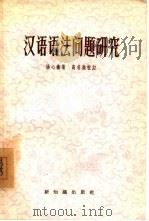
- 汉语语法问题研究
- 1956 新知识出版社
-
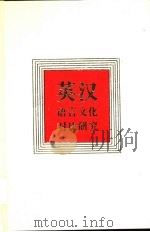
- 英汉语言文化对比研究 1990-1994
- 1996 上海:上海外语教育出版社
-
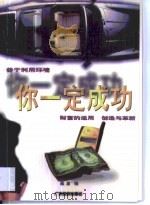
- 你一定成功
- 1997 广州:广东旅游出版社
-
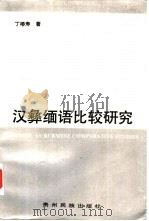
- 汉彝缅语比较研究
- 1991 贵阳:贵州民族出版社
-
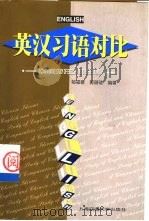
- 英汉习语对比
- 1999 上海:上海交通大学出版社
-

- 语言对比研究与对外汉语教学
- 1995 北京:华语教学出版社
-

- 朝汉语语法对比
- 1999 延吉:延边大学出版社
-
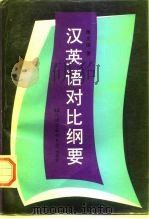
- 汉英语对比纲要
- 1997 北京:北京语言文化大学出版社
-
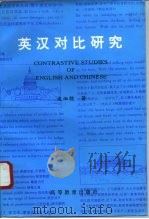
- 英汉对比研究
- 1993 北京:高等教育出版社
-

- 汉日语言对比研究
- 1993 北京:北京大学出版社
提示:百度云已更名为百度网盘(百度盘),天翼云盘、微盘下载地址……暂未提供。➥ PDF文字可复制化或转WORD

